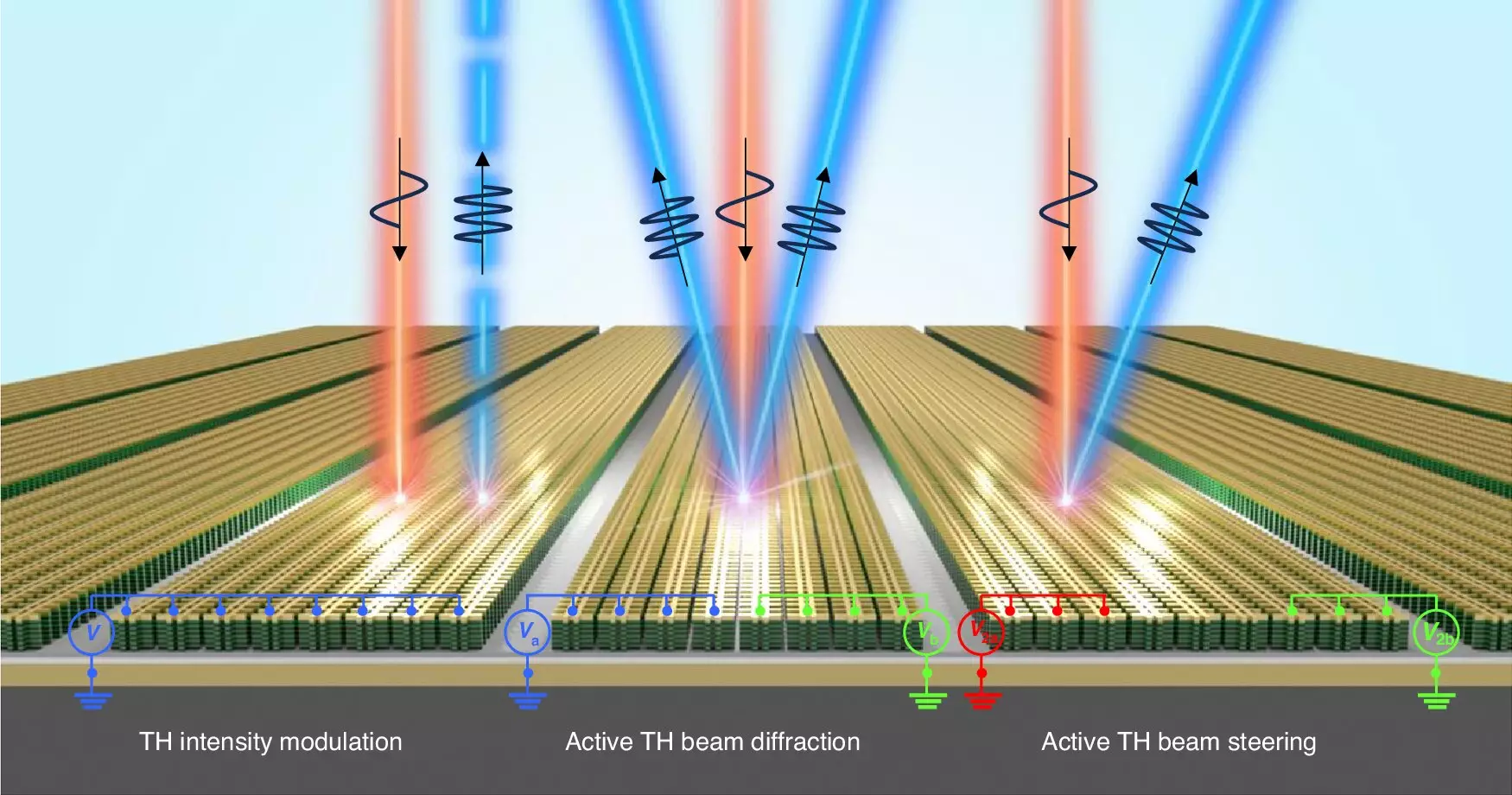Recent innovations in nonlinear optical metasurface technology offer exciting opportunities for the future of communication and diagnostic applications. Researchers from the University of Ulsan, led by Professor Jongwon Lee, have made significant strides in this domain, producing an experimental platform that leverages intersubband polaritons and multiple quantum wells (MQWs) to enhance third-harmonic generation (THG). Published in the journal *Light: Science & Applications*, this study marks a pivotal step towards developing compact and efficient optical devices that can transform numerous fields, ranging from quantum communications to advanced medical diagnostics.
One of the standout achievements of this research is the impressive 450% modulation depth achieved in the THG signal, accompanied by a striking 86% suppression of zero-order THG diffraction. This makes it possible to fine-tune the properties of the generated light with unprecedented precision. The ability to manipulate the local phase beyond 180 degrees is particularly notable, suggesting new methodologies for steering optical beams using phase gradients. This capability paves the way for adjustable optical elements that can cater to diverse applications with a high degree of control.
Nonlinear optics, which focuses on the intricate interactions between light and matter, boasts the potential to generate multiple wavelengths from a single light source, thus vastly improving data transmission capabilities. A familiar example of this technology is the ordinary green laser pointer, yet the advancements represented by the new metasurface have the potential to revolutionize our understanding and use of optical phenomena. By contributing to significantly smaller and lighter devices—some even thinner than human hair or as light as paper—this technology exemplifies how optical science can lead to form factor reductions while enhancing functionality.
Traditional methods in this field have faced challenges regarding electrical control, a limitation that has now been addressed. The novel metasurface developed by Professor Lee’s team allows for effortless modulation, akin to turning a dial, which could change the landscape of optical device control. With the additionally introduced technology permitting voltage-controlled second-harmonic generation (SHG), they have provided a robust framework for manipulating light in ways previously unattainable. The ability to adjust both the intensity and phase independently means that the implications for applications surrounding this technology might be profoundly impactful.
According to Professor Lee, the control afforded by this advancement could lead to transformative applications, particularly in dynamic holography, cryptographic systems, and next-generation quantum sensors. The use of electronically tunable optical elements creates a new frontier in creating versatile and adaptive technologies that can respond to a variety of needs, particularly where precision and flexibility are essential. Researcher Seongjin Park aptly notes that the defining characteristics of their optical metasurface derive from both the semiconductor layers and metal structures, underscoring the intricate marriage of materials science and optics in driving these advancements.
The ongoing evolution of nonlinear optical metasurfaces presents exciting avenues for future innovation. As researchers continue to refine these technologies, their vast potential remains a compelling area for exploration, promising significant enhancements to the way we manipulate and utilize light in numerous applications.


Leave a Reply